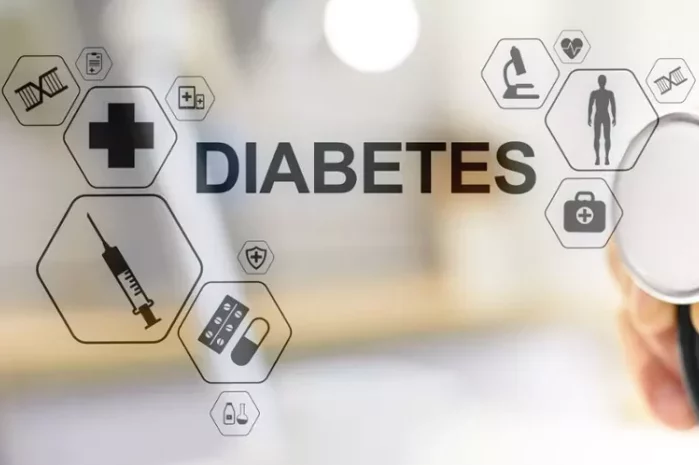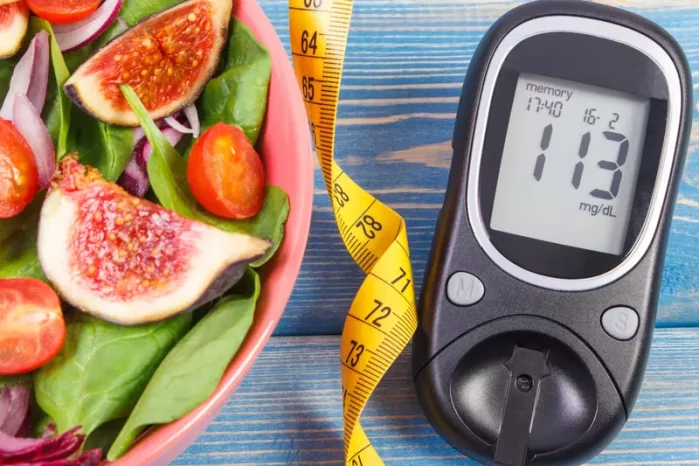Monitoring blood sugar levels is a crucial part of managing diabetes. Consistent and accurate monitoring can help individuals make informed decisions about their diet, physical activity, and medication. It allows individuals with diabetes to understand how various factors, such as food, exercise, and insulin, impact their blood sugar levels, enabling them to take timely action and prevent complications.
One of the most common questions that people with diabetes ask is, “When is the right time to check blood sugar?” The answer depends on a variety of factors, including the type of diabetes, the individual’s treatment plan, and the goals of monitoring. In this article, we will explore the best times to check blood sugar, why these times are important, and how to interpret the results for effective diabetes management.
Why Is Blood Sugar Monitoring Important?
Before diving into the right times to check blood sugar, it’s essential to understand the importance of blood sugar monitoring for diabetes management.
Detecting High or Low Blood Sugar: Regular monitoring allows individuals to detect abnormal blood sugar levels, either high (hyperglycemia) or low (hypoglycemia). These conditions can lead to serious health complications if left unchecked, such as diabetic ketoacidosis (DKA) in high blood sugar or seizures and loss of consciousness in low blood sugar.
Understanding Patterns: Regular testing helps identify patterns in blood sugar levels. For example, testing after meals can reveal how certain foods affect glucose levels, while checking before and after exercise can highlight how activity influences blood sugar.
Adjusting Treatment Plans: Blood sugar readings help healthcare providers adjust medications, insulin dosages, and lifestyle recommendations to keep blood sugar levels within the target range. Monitoring provides real-time feedback on how well an individual’s treatment plan is working.
Preventing Long-Term Complications: Over time, poorly controlled blood sugar can lead to complications such as heart disease, nerve damage, kidney problems, and vision issues. Consistent monitoring helps prevent these complications by ensuring blood sugar is kept under control.
Now, let’s explore the best times to check blood sugar for optimal diabetes management.
1. Fasting Blood Sugar (Upon Waking Up)
The first test of the day, which is usually done before eating breakfast, is one of the most important for individuals with diabetes. This is known as the fasting blood sugar test.
Why It’s Important: Fasting blood sugar provides insight into how well the body has managed glucose overnight. During sleep, the body continues to use glucose, and the liver may release stored glucose into the bloodstream. For individuals with diabetes, the liver might release too much glucose, leading to higher-than-normal blood sugar levels in the morning, a condition known as dawn phenomenon.
Target Range: For most individuals with diabetes, the fasting blood sugar target range is typically between 80 and 130 mg/dL, though specific targets can vary based on individual treatment plans and goals. Elevated fasting blood sugar can signal the need for adjustments in medication, diet, or lifestyle.
How to Test: To test fasting blood sugar, it is essential to wait at least 8 hours after the last meal before checking the blood sugar level. This ensures that the reading is not influenced by food consumption, which can temporarily elevate blood sugar.
2. Before Meals (Preprandial Blood Sugar)
Testing blood sugar levels before meals, or preprandial blood sugar, is another key time to check blood sugar levels, especially for individuals on insulin therapy.
Why It’s Important: Checking blood sugar before meals provides valuable information about how the body is handling glucose levels throughout the day. It helps determine if blood sugar levels are within the target range before consuming food and is particularly useful for adjusting insulin doses or other medications.
Target Range: Ideally, preprandial blood sugar levels should be between 70 and 130 mg/dL, although the specific range may differ based on personal health goals and recommendations from healthcare providers.
How to Test: To accurately test before meals, check blood sugar first thing in the morning (for fasting readings) or right before eating. This will ensure that any changes in blood sugar caused by food consumption are measured separately.
3. After Meals (Postprandial Blood Sugar)
Another critical time to check blood sugar is after meals. This is referred to as postprandial blood sugar testing, and it helps assess how well the body is responding to the food consumed.
Why It’s Important: After eating, blood sugar naturally rises as the body digests food. For individuals with diabetes, monitoring postprandial blood sugar helps determine how effectively their body handles the carbohydrates they consume. It also provides valuable insight into the effects of specific foods on glucose levels.
Target Range: Postprandial blood sugar levels are typically measured 1-2 hours after the start of a meal. The American Diabetes Association recommends that postprandial blood sugar should be less than 180 mg/dL, but this target may be adjusted depending on individual treatment plans.
How to Test: For accurate postprandial testing, it’s essential to test blood sugar 1-2 hours after the first bite of a meal. This timeframe allows the body enough time to begin absorbing and processing glucose from the food.
4. Before and After Exercise
Physical activity can have a significant impact on blood sugar levels, so it is essential to monitor blood glucose before and after exercise.
Why It’s Important: Exercise affects blood sugar in different ways depending on the type and intensity of the activity. For example, moderate exercise may help lower blood sugar levels by increasing insulin sensitivity and facilitating glucose uptake by muscles. However, intense exercise can sometimes lead to an increase in blood sugar due to the release of stress hormones, like adrenaline.
Target Range: Blood sugar before exercise should be between 100 and 250 mg/dL. If blood sugar is below 100 mg/dL before exercise, it may be necessary to consume a small snack to prevent hypoglycemia during or after the activity. Post-exercise blood sugar should be checked as well, especially if the exercise was intense, to ensure that blood sugar remains within a safe range.
How to Test: Check blood sugar before exercise to determine if adjustments are needed (for example, consuming a snack to prevent low blood sugar). After exercising, check blood sugar to assess the impact of the activity and ensure that glucose levels remain within a safe range.
5. Before Bed
Checking blood sugar before bed is essential for preventing overnight hypoglycemia, particularly for individuals who use insulin or other medications that can lower blood sugar levels.
Why It’s Important: Blood sugar levels can drop overnight, especially if the body is insulin-sensitive or if medication doses have been adjusted during the day. Testing before bed ensures that blood sugar levels are in a safe range before going to sleep, helping prevent low blood sugar during the night.
Target Range: Before bed, blood sugar should generally be between 100 and 140 mg/dL. However, this target range may vary depending on individual goals, activity levels, and medication schedules.
How to Test: Check blood sugar about 30 minutes to 1 hour before bedtime. If the reading is lower than the target range, it may be necessary to eat a small, balanced snack that includes carbohydrates and protein to help maintain stable blood sugar levels overnight.
6. When Experiencing Symptoms of High or Low Blood Sugar
Another important time to check blood sugar is when experiencing symptoms of either high or low blood sugar. Symptoms of low blood sugar (hypoglycemia) include shaking, sweating, irritability, and dizziness, while high blood sugar (hyperglycemia) may cause increased thirst, frequent urination, fatigue, and blurred vision.
Why It’s Important: Checking blood sugar when symptoms arise allows individuals to quickly assess whether their symptoms are related to blood sugar levels and take appropriate action. If blood sugar is too low, consuming a fast-acting carbohydrate can help raise levels, while high blood sugar may require insulin adjustments or other interventions.
How to Test: When feeling symptoms of hypoglycemia or hyperglycemia, it’s crucial to test blood sugar immediately to confirm the cause of the symptoms and determine the appropriate course of action.
7. Random Blood Sugar Testing
While the above times are the most common for checking blood sugar, some individuals may also benefit from random blood sugar testing, which involves checking blood glucose levels at various times throughout the day, regardless of when meals are consumed.
Why It’s Important: Random testing can help identify patterns that may not be noticed with more structured testing times. For example, random testing may reveal if blood sugar tends to rise after certain activities or foods, which can guide treatment adjustments.
How to Test: Random blood sugar tests can be conducted at any time of day, typically without regard to meals. This type of testing provides a snapshot of blood sugar at any given point in time.
Conclusion
Monitoring blood sugar levels is an essential part of diabetes management. Knowing the right times to check blood sugar, such as before and after meals, during exercise, and before bed, helps individuals maintain optimal glucose control and prevent complications. By incorporating regular testing into their daily routine, individuals with diabetes can better understand how their body responds to different factors and make informed decisions about their health. It is always important to work with a healthcare provider to develop a personalized blood sugar monitoring plan that aligns with individual health goals and treatment plans.
Related topics:
What are Healthy Average Glucose Levels
























